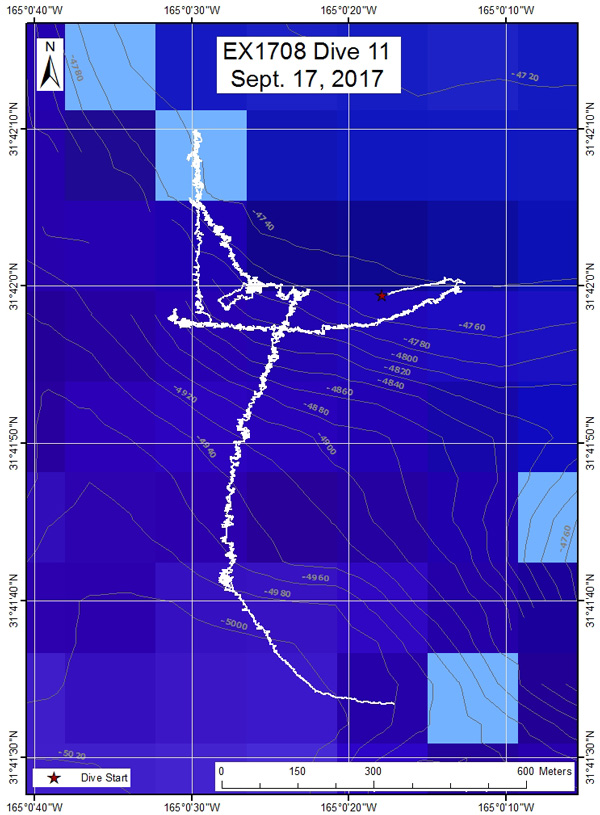May 5, 2020: Rebroadcast
Sorry you missed our rebroadcast of the dive. To learn more about the dive, however, check out the links below.
Deep-Sea Symphony: Exploring the Musicians Seamounts
Dive 11: Symphony in Sea Major
Date: September 17, 2017
Location: 31°, 41.557' N ; 165°, 00.294' W
Dive Depth Range:1,003 meters (3,290 feet)
The water column is the largest, and least explored, habitat on Earth. Basic information is lacking on the distributions and abundances of midwater organisms in most parts of the globe, including in the vicinity of the Musicians Seamounts in the Pacific. During the Deep-Sea Symphony: Exploring the Musicians Seamounts expedition, on September 17, 2017, the NOAA Office of Ocean Exploration and Research and partners conducted the first-ever Okeanos Explorer remotely operated vehicle dive dedicated exclusively to exploring the water column.
The dive consisted of three passes through the water column at depths between 300 and 1,000 meters (984 and 3,280 feet). Over the course of the dive, scientists observed a diversity of siphonophores, jellyfish, and ctenophores, as well as an abundance of arrowworms, larvaceans, shrimp, and two types of squids. Also, for two short periods during the dive, all of remotely operated vehicle lights were turned off, providing a brief glimpse of bioluminescence.
Exploring the Water Column
The water column, which includes the area between the surface of the ocean and the seafloor is the largest habitat on Earth. This vast open space includes 95 to 99 percent of the total livable volume on Earth and is home to a menagerie of animals that captivate the imagination and provide a vital link in the ocean's food web. Despite its importance to all life in the ocean, the water column is one of the least explored habitats on the planet. Using innovative exploration tools, the NOAA Office of Ocean Exploration and Research is closing the gap in understanding this mysterious world and its inhabitants. Video courtesy of the NOAA Office of Ocean Exploration and Research. Download larger version (mp4, 60.1 MB).
For More Information:
About the Dive:
Dive Location Map
